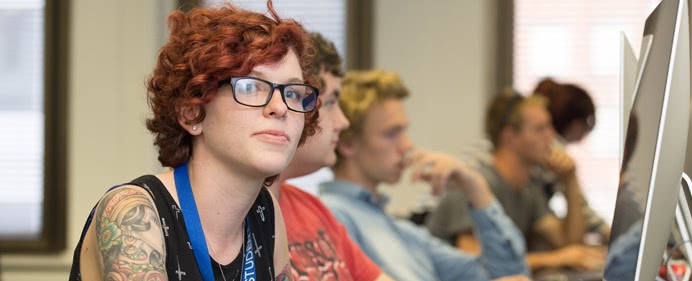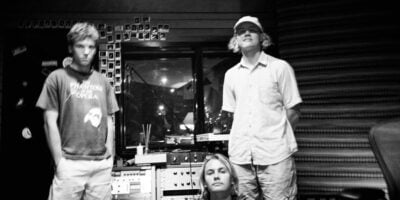The world of technology sure moves fast – and people in the creative industries know it better than most. While certain media platforms have been harshly afflicted by 21st century fluidity (the printed word is a paramount example), resignation isn’t the appropriate response.
Romantic attachments to particular mediums can be difficult to sever, but it’s imperative to harness what’s happening right now or else get left behind. For budding animators, filmmakers, designers, games developers and audio producers, this is where a creative media institution like SAE slides into view. At present, there’s more demand for training in these fields than ever before.
“Essentially, almost anything that you look at – whether it’s your phone, or a TV commercial, or music being produced, or a short documentary – it is, to an extent, a combination of skills across all or some of these disciplines,” says Radovan Klusacek, SAE Sydney’s campus manager. “And it’s only going to go ahead. I think we are just at the very beginning of the role that media will actually play in our lives.”
SAE’s Surry Hills campus has been educating folks interested in working in the film and music industries since 1976. In February this year, SAE packed its things and relocated to a greatly advanced facility situated on York Street in the CBD. “The new campus is purpose-built from the ground up,” Klusacek says. “We could do anything we wanted, and that’s one of the rare opportunities that you have as an education institution – to actually design the spaces in such a way that they support the way we deliver our courses and support the nature of the courses.”
Truth be told, here in Sydney there are no shortage of schools that provide training in audio, film and multimedia technologies. However, Klusacek believes that what makes SAE unique is the opportunity for students to become simultaneously acquainted with the inner workings of multiple fields.
“We put the students in a situation where they interact with other disciplines,” he says. “We have animation and film students working on projects together because that is what will be happening in real life. So they not only learn the technical skills – how to operate a camera or how to operate a piece of animation software – but also how to interact with people in other disciplines in an environment that looks and feels very much like what they would be experiencing in real life. The real-life learning experience is of utmost importance to us.”
Something that often deters people from seeking academic training in a creative field is the expectation that it will involve being force-fed a particular, inflexible method. It’s difficult to strike a balance between adhering to a teaching curriculum and allowing for individual experimentation, but SAE understands how important it is to cultivate a distinctly personal approach.
“If you go on the internet you can find information about how to operate just about any piece of equipment,” Klusacek says, “so we don’t spend all our time on teaching the technical side of things. Yes, you’re learning how to operate a camera, but what do you do with it? What is the message that you’re trying to portray? What is the outcome that you are trying to achieve? And how do you achieve that given the skills that you have and also the personality and the aspirations [you have]? The focus on creativity is very much hand-in-hand with teaching the technical skills.”
SAESydney Open Day is being held on Saturday August 23 at the York St campus, with more details available online.

































